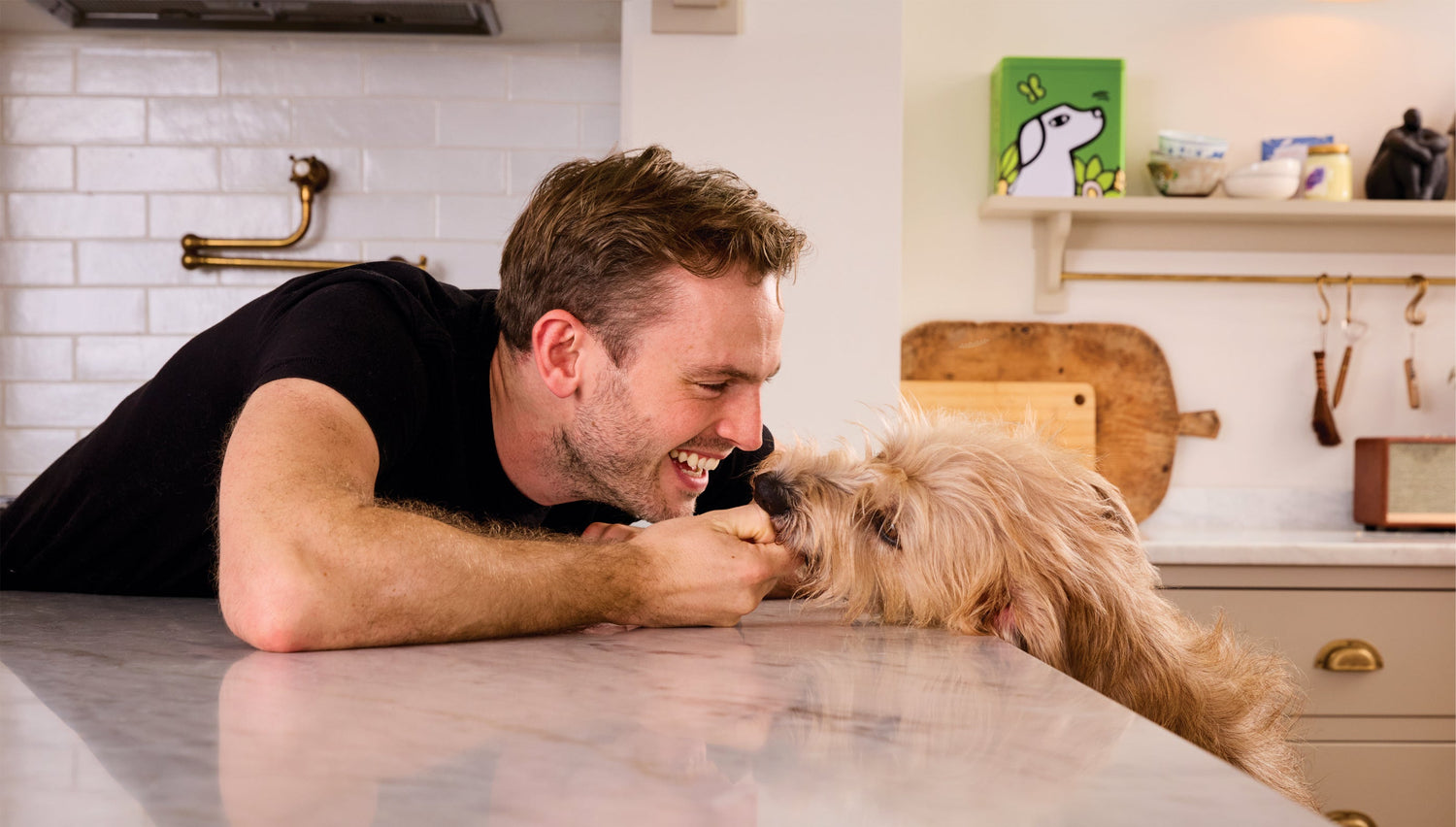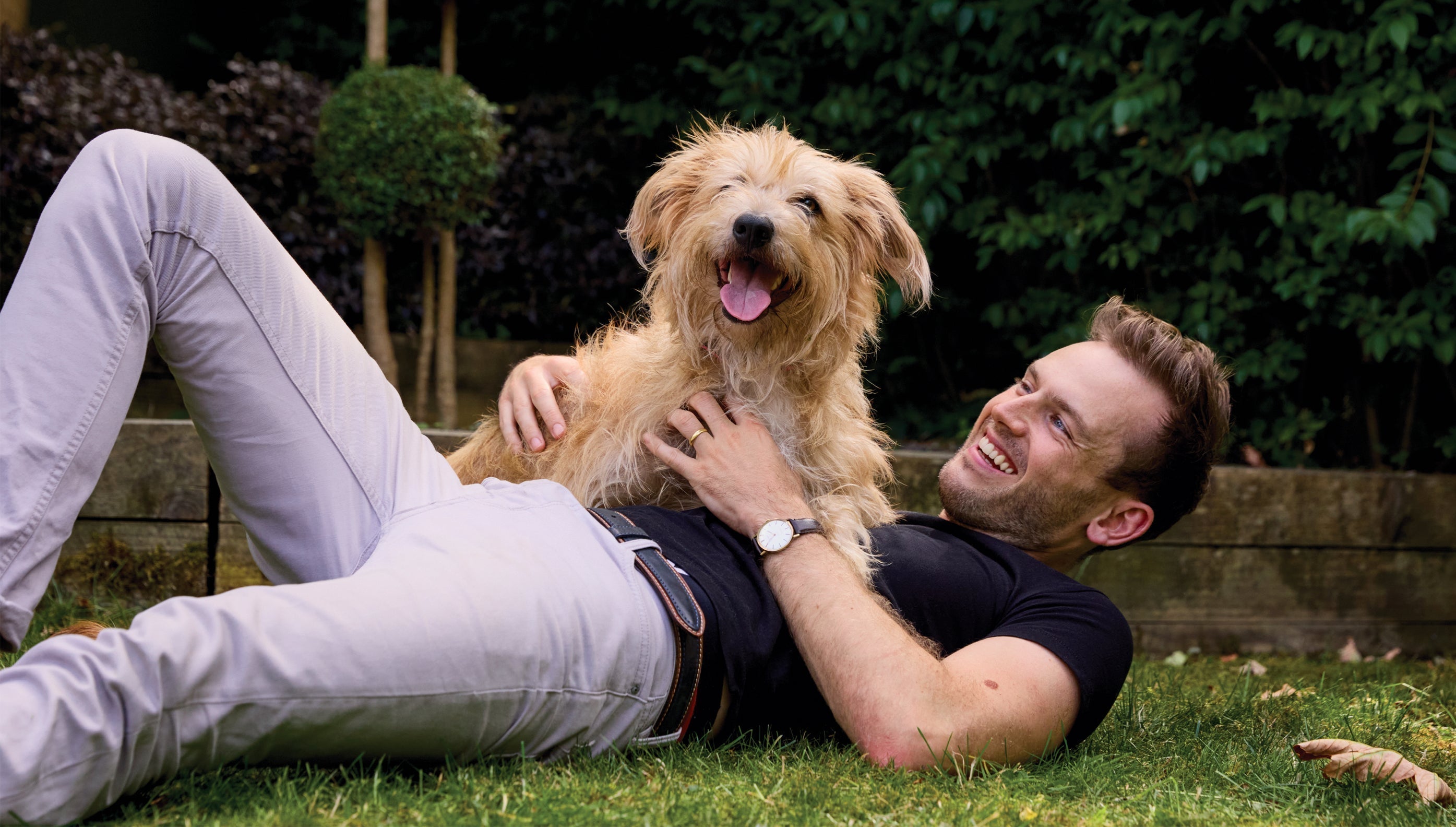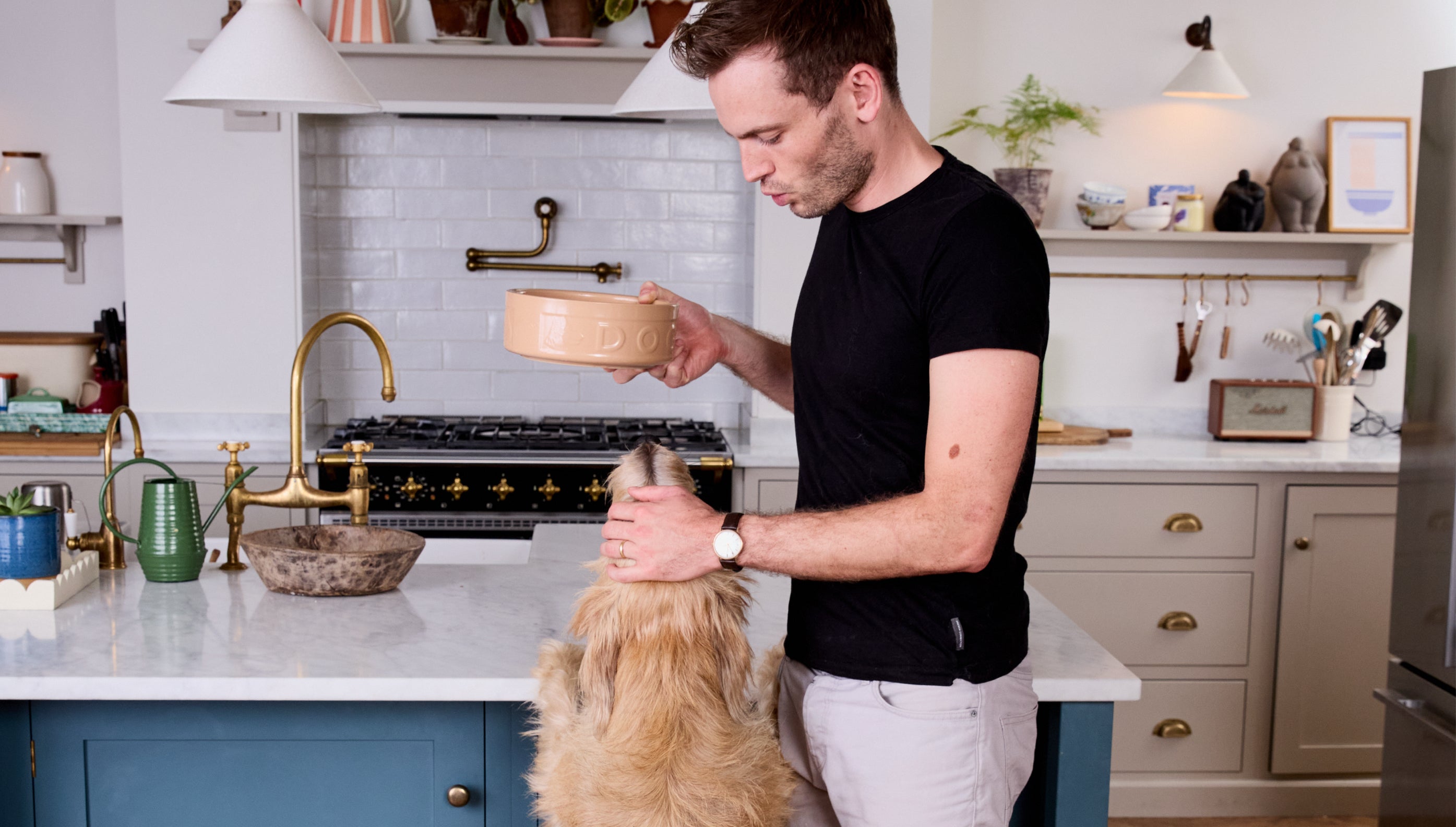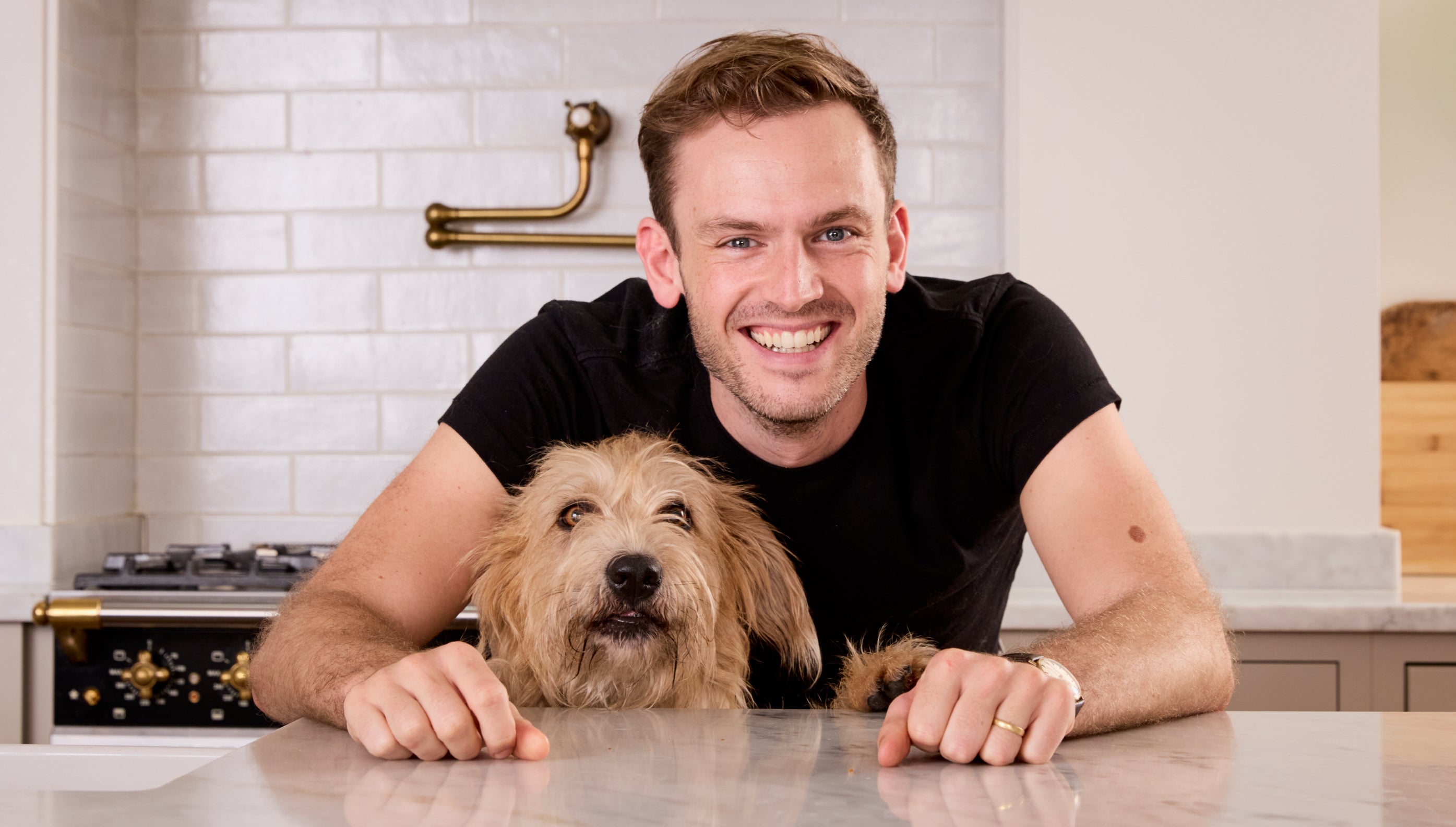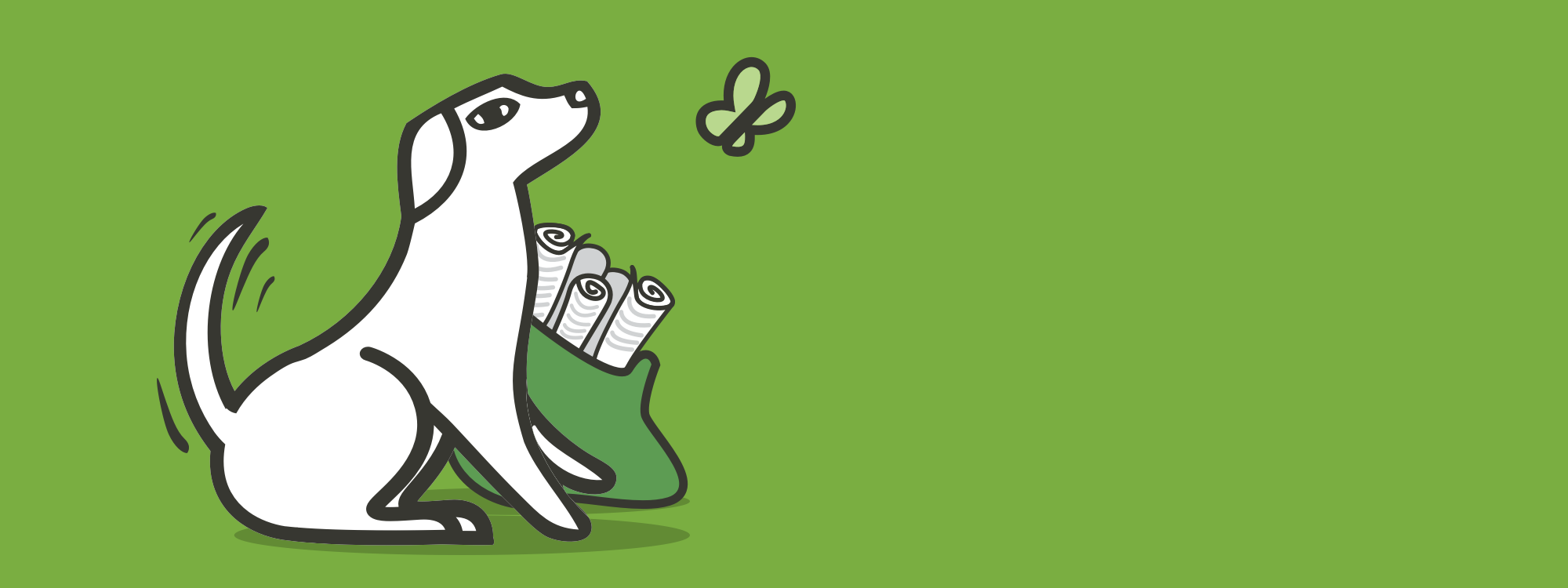Introducing a puppy to your family? Prepare for tiny snuggles, big floppy ears and extra slobbery kisses. And as your little one grows and their growing pains begin, so begins their teething. An unavoidable period that every pooch (and your sock drawer) must go through, which involves your dog’s adult canine teeth coming in and replacing their puppy milk teeth (a term used to describe their original baby teeth. Deciduous teeth is another). We asked Rory the Vet to lay out his survival tips to help bring your pup (and your sore hands) some relief.
MEET RORY THE VET

We’ve partnered up with animal whisperer and renowned veterinarian, Dr Rory Cowlam, to share his wisdom when it comes to all things furry. And boy, does this man know his stuff.
Starting with his degree from the Royal Veterinary College, Rory has since co-starred in the CBBC’s series The Pet Factor, shared his knowledge on the likes of Blue Peter and written all about it in his book, Secret Life of a Vet.
Follow him on Instagram
When do puppies start teething?
Puppies go through two rounds of teething, just like children. This process starts as early as two weeks. They initially produce 28 deciduous teeth which then get replaced by 42 adult teeth from around four to six months of age. Note that breed variations could differ in this process, and not all dogs produce this many teeth, especially brachycephalic breeds.
What happens to the teeth that fall out?
So, where do these teeth go!? Don’t be worried if you can’t find their baby teeth around the house. More often than not, your pup will swallow them or eat them after they have fallen out. This is perfectly harmless and your little fluffball will pass them without any issues. If a wobbly tooth comes out while it is still semi-attached, you can find some blood. It’s all part of the process.

Signs your puppy is teething
Typical symptoms that suggest your pooch is teething include:
• Wobbly or missing teeth: It might seem obvious, but if they have any wobbly teeth or you’ve noticed that they’ve lost one already, the teething process is well underway
• Drooling: You may notice extra slobber as their teeth grow
• Swollen or bleeding gums: The eruption of adult teeth naturally causes some swelling and bleeding from a puppy’s gums
• Preference for softer foods: Some dogs will stick to soft food options during this painful time
• Pawing at their mouth: If you see your puppy doing this, make sure to check that there isn't a tooth hanging on and causing some irritation
• Nothing: Sometimes you won’t notice anything at all
How to cope with chewing/mouthing
Teething can be uncomfortable or even painful. Your pup’s gums may become swollen as their baby teeth loosen and their new teeth erupt. We’ve all been there.
Usually, the way puppies handle this discomfort is by chewing/mouthing. This helps ease the discomfort and tension they feel on their gums.
Unfortunately, this can result in your slippers getting devoured or your hands being bitten. The best way to handle this is by redirecting their chewing to puppy appropriate toys. You can follow my Puppy Training Guide for further advice.

How to help a teething puppy
So – how do we help our little pups feel better?! These are my teething recommendations to help ease the process:
• Stick to soft foods (unless your pup is on a dry only diet!). These are less painful for your puppy to chew
• Frozen treats, like a frozen carrot, may help to settle sore gums. Just be mindful of its size, otherwise it can be a potential choking hazard
• Avoid playing tug of war during this time. This can lead to broken teeth! Wait until their adult teeth are through before playing this game
• Offer up lots of toys for them to chew. Your dog might prefer hard or soft toys, depending on their pain level. Keeping a toy in your fridge for them to chew later is a good way to help with inflammation too!

Feeding a teething puppy
It can be tricky to feed a teething puppy. Their appetite may be affected due to the discomfort. Here are some methods that may help.
Soften dry food
Crunchy, solid food may be painful to eat while teething. If your puppy is on a diet of dry food, you can soften their dinner with some warm water to help lessen any discomfort caused by eating. I generally avoid warm water as cool temperatures can help with inflammation, and so I would suggest leaving the water to cool off before feeding to your pup.
Avoid changing their diet
Teething is often the first time a dog owner will see their pup be ‘fussy’ with their food. Any changes to accommodate their discomfort should be minimal to avoid worsening the issue with stomach upsets. Try to stick to the same diet, making sure it is soft (using my earlier advice for those on dry foods!). Add in some frozen carrots or similar to help with inflammation.

Should you brush your puppy’s teeth while they’re teething?
You must completely stop brushing your puppy’s teeth while they are teething! Not only would this be painful for your pup to endure, but they could also begin to associate pain with brushing, which will become a bigger issue later for you to get them to accept it.
You can begin brushing their teeth again once you can see that their gums are a nice and healthy light pink and their new adult teeth are through.
For additional tips on how to look after your dog’s teeth, check out my advice here.

Talk to your vet if you have any concerns
That’s my take on puppy teething. Hopefully I can help make this turbulent time a little easier for your pup. It takes a little bit of patience, but your friend should grow those adult teeth and become less nippy in no time. For any further tips or advice concerning your dog’s health, contact your veterinarian.
The information in this article is intended as a guide to help pets and pet parents on their journey together. It is provided for educational and informational purposes only and is not meant as a substitute for professional advice from a vet, behaviourist, trainer or other professional. We encourage all pet parents to consult with their vet and/or behaviourist to ensure their pet’s specific needs are met.
Published on 05/11/2024
